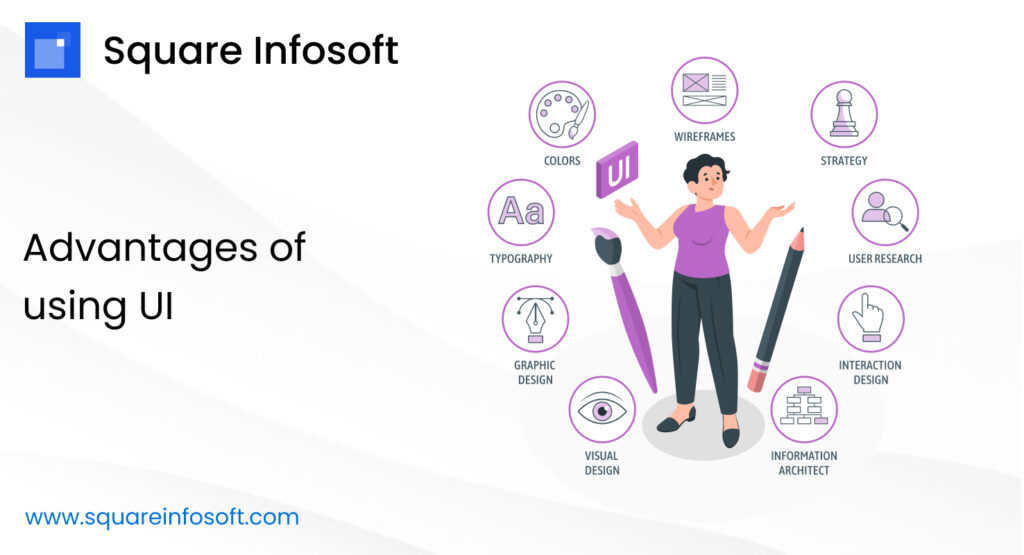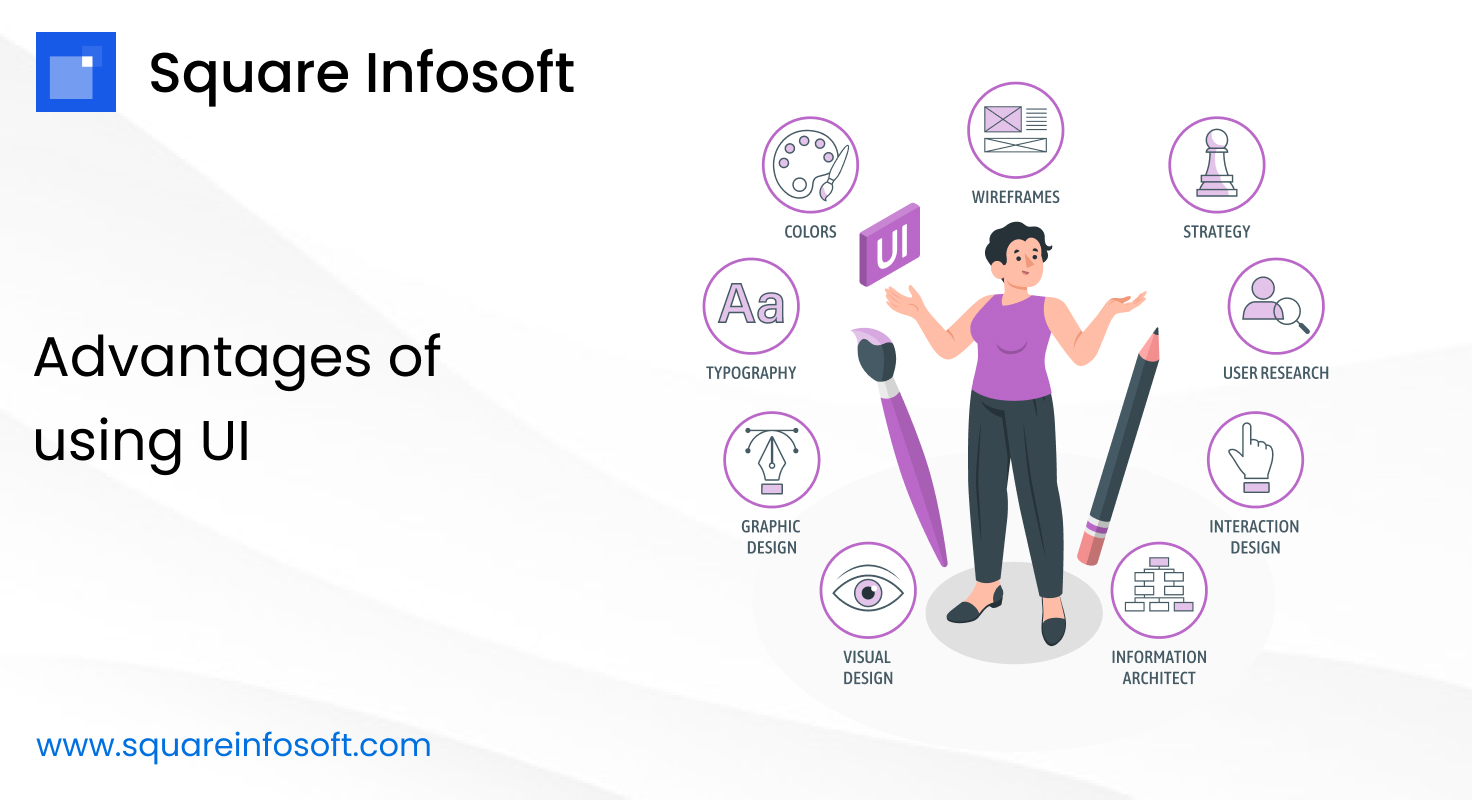UI design is a key part of any app or software. It helps make things easy to use and improves the overall experience for users.

Here are some key advantages of using a well-designed UI:
Enhanced User Experience (UX):
- A well-crafted UI contributes to a positive overall user experience. When users find an interface easy to navigate and visually appealing, it creates a sense of satisfaction and enjoyment.
Improved Usability:
- UI design focuses on creating interfaces that are intuitive and easy to use. Users can quickly learn how to interact with the system, reducing the learning curve and enhancing usability.
Increased User Productivity:
- A streamlined and efficient UI allows users to accomplish tasks more quickly and with fewer errors. This can lead to increased productivity and user satisfaction.
Clear Communication:
- UI design facilitates clear communication between the system and the user. Well-designed interfaces convey information effectively through visual elements, reducing the chances of confusion or misinterpretation.
Consistency Across Platforms:
- A consistent UI design across different platforms and devices ensures a uniform experience for users. Consistency contributes to brand recognition and makes the application more user-friendly.
Better Accessibility:
- UI design considers accessibility features, making interfaces usable for people with disabilities. This inclusivity is important for reaching a broader audience.
Positive Brand Perception:
- A visually appealing and well-designed UI creates a positive impression of the brand. Users are more likely to trust and engage with an application that has a polished and professional appearance.
Effective Use of Screen Real Estate:
- UI design optimizes the use of available screen space, presenting information and controls in a way that maximizes usability and minimizes clutter.
Adaptability to Various Devices:
- Responsive UI design ensures that the interface adapts seamlessly to different screen sizes and resolutions, allowing users to access the application on various devices.
Reduced Errors and User Friction:
- A well-designed UI minimizes the occurrence of errors and reduces user friction. Clear labels, feedback mechanisms, and logical workflows contribute to a smoother user experience.
Facilitates User Guidance and Onboarding:
- UI elements can be strategically designed to guide users through the application, making onboarding processes smoother. Well-placed tooltips, hints, and visual cues can assist users in understanding the system.
Supports User Engagement:
- Engaging UI design, including animations, transitions, and interactive elements, can captivate users’ attention and keep them engaged with the application.
Quick Decision Making:
- Intuitive UI design enables users to make decisions quickly by presenting information in a clear and organized manner. This is particularly important for applications where users need to make rapid decisions.
In summary, a well-designed UI is essential for creating a positive user experience, improving usability, and fostering engagement. Investing in UI design not only benefits users but also contributes to the overall success and competitiveness of the software or application.




